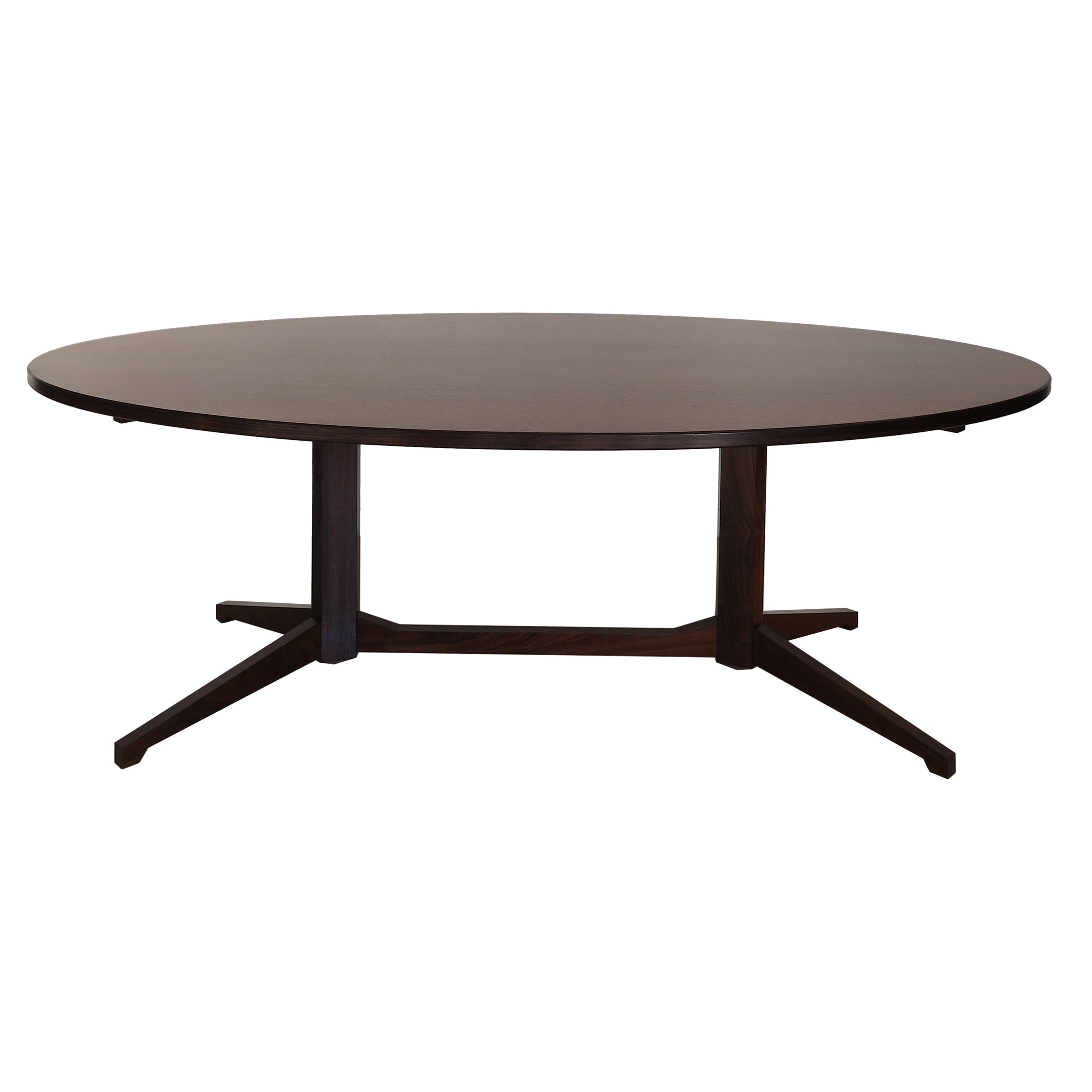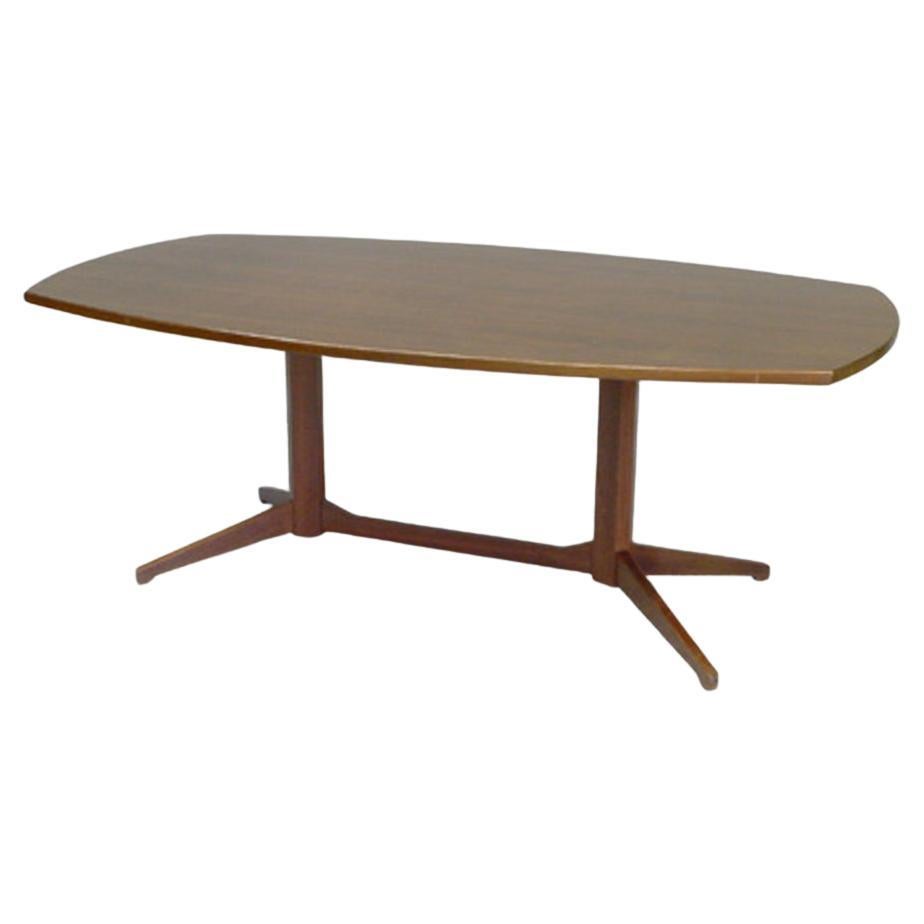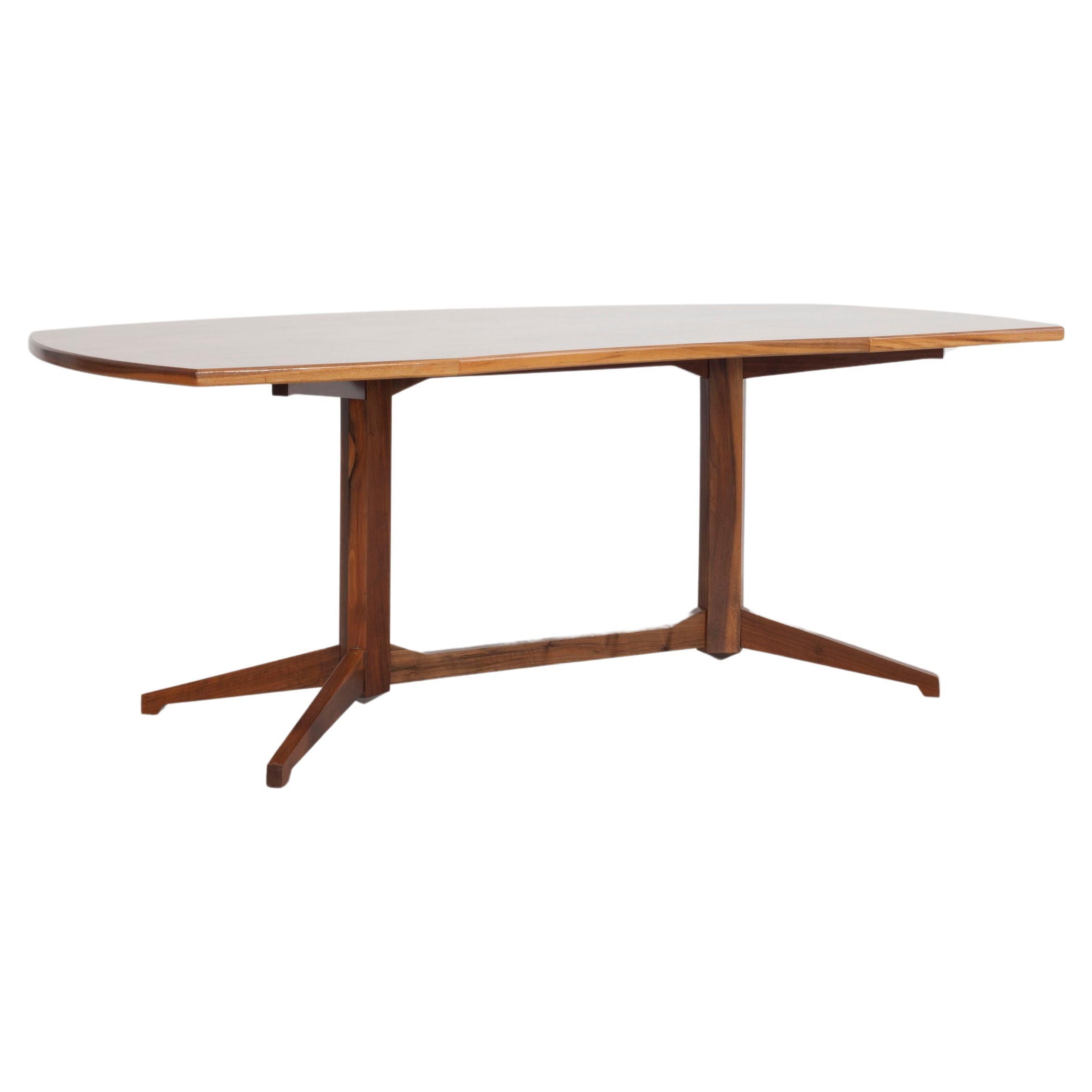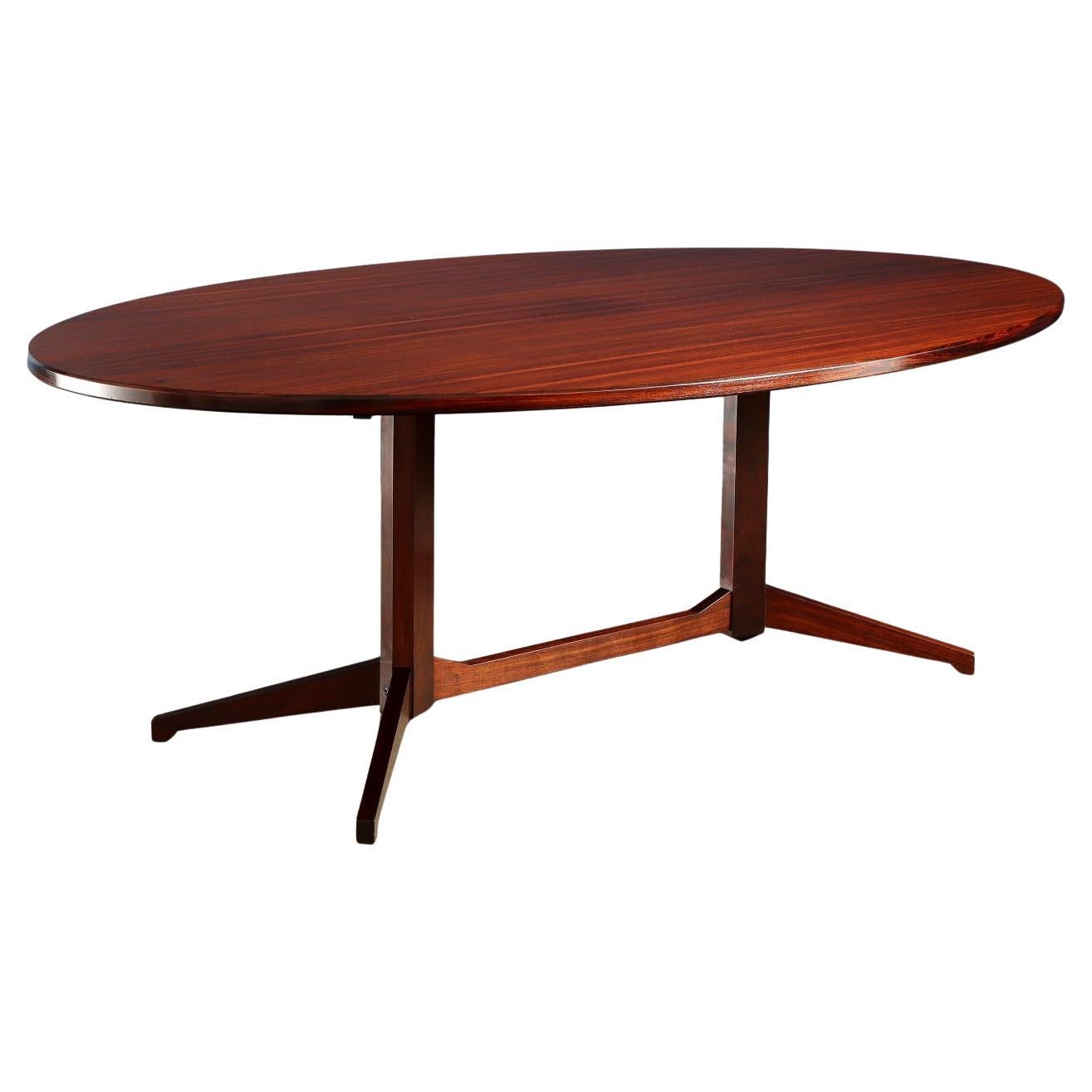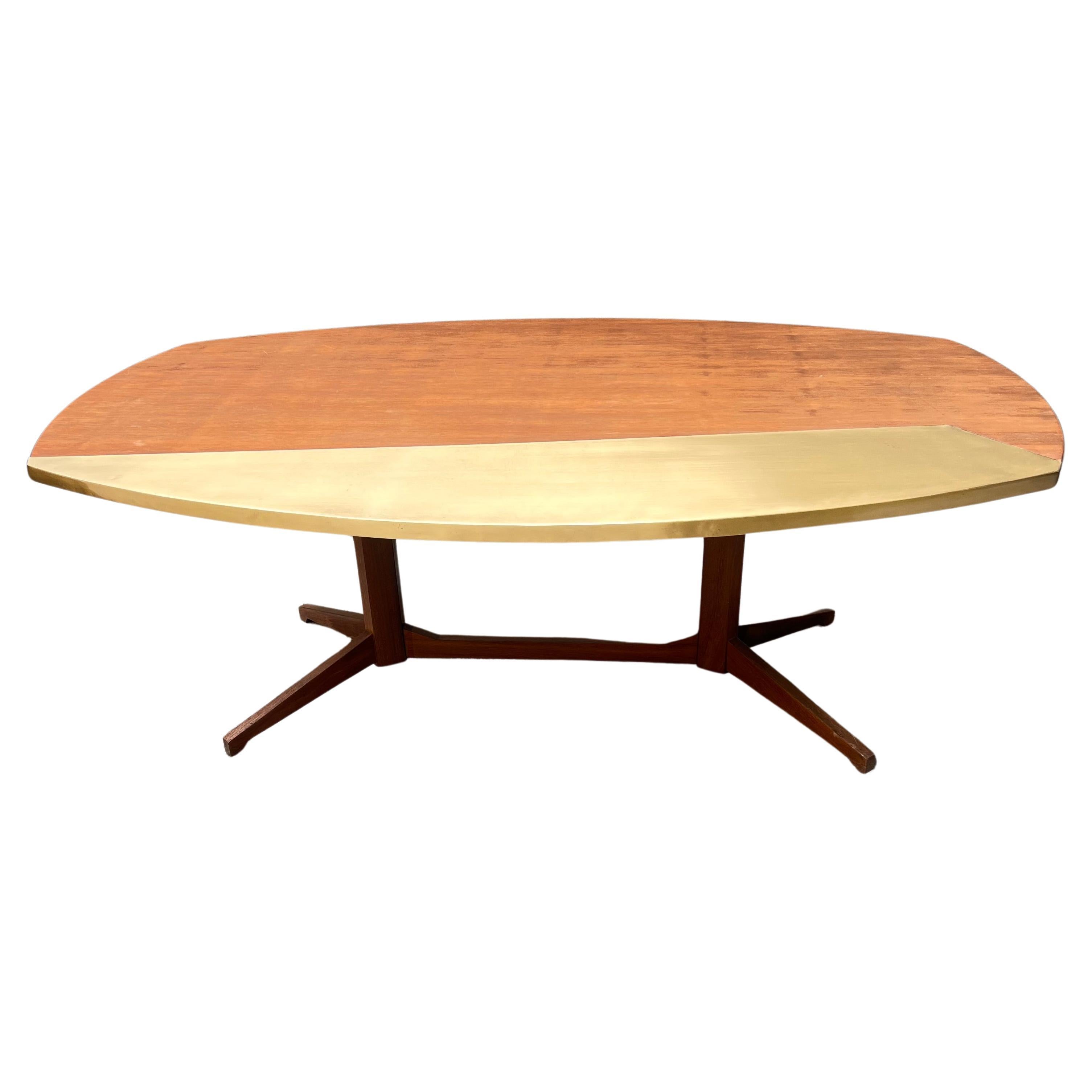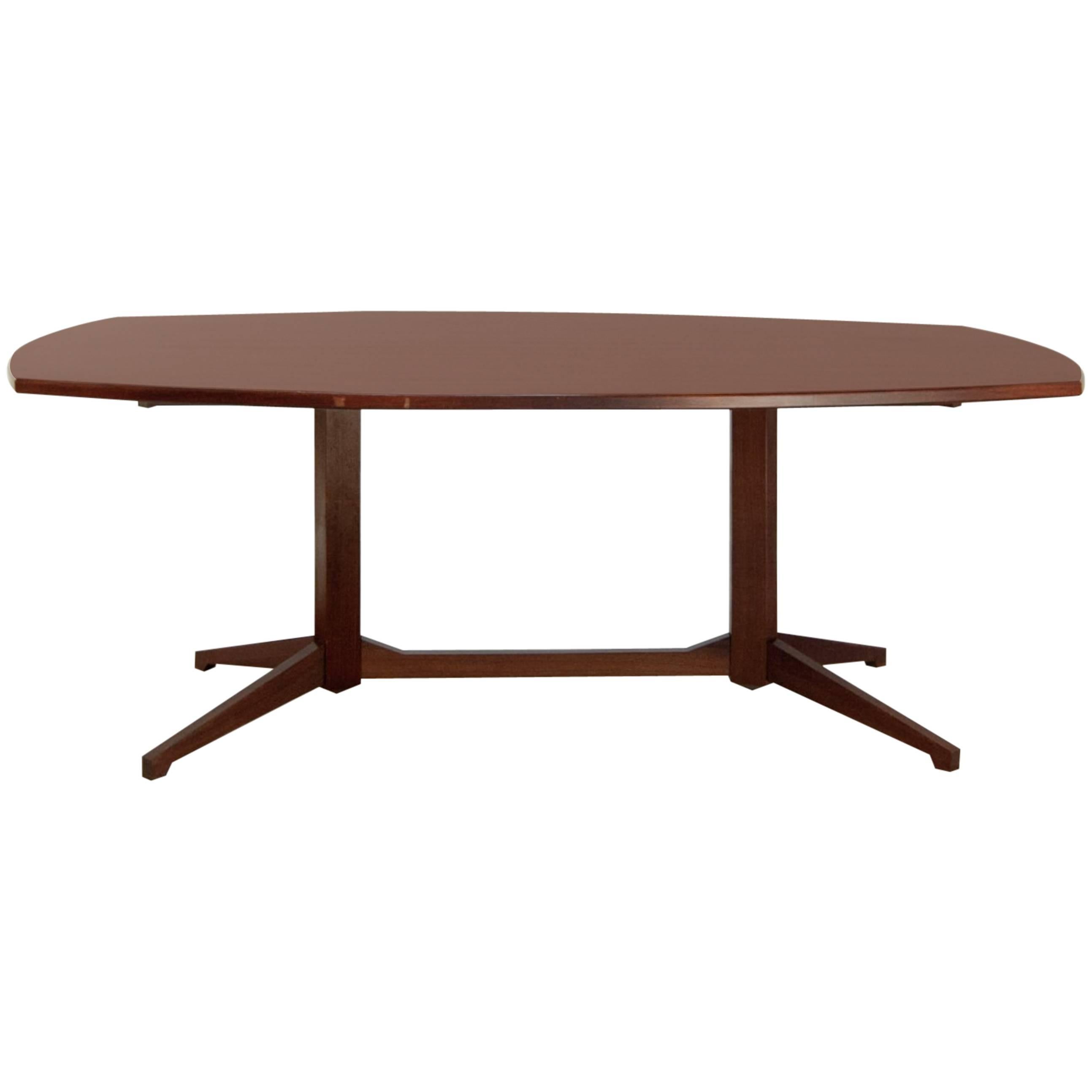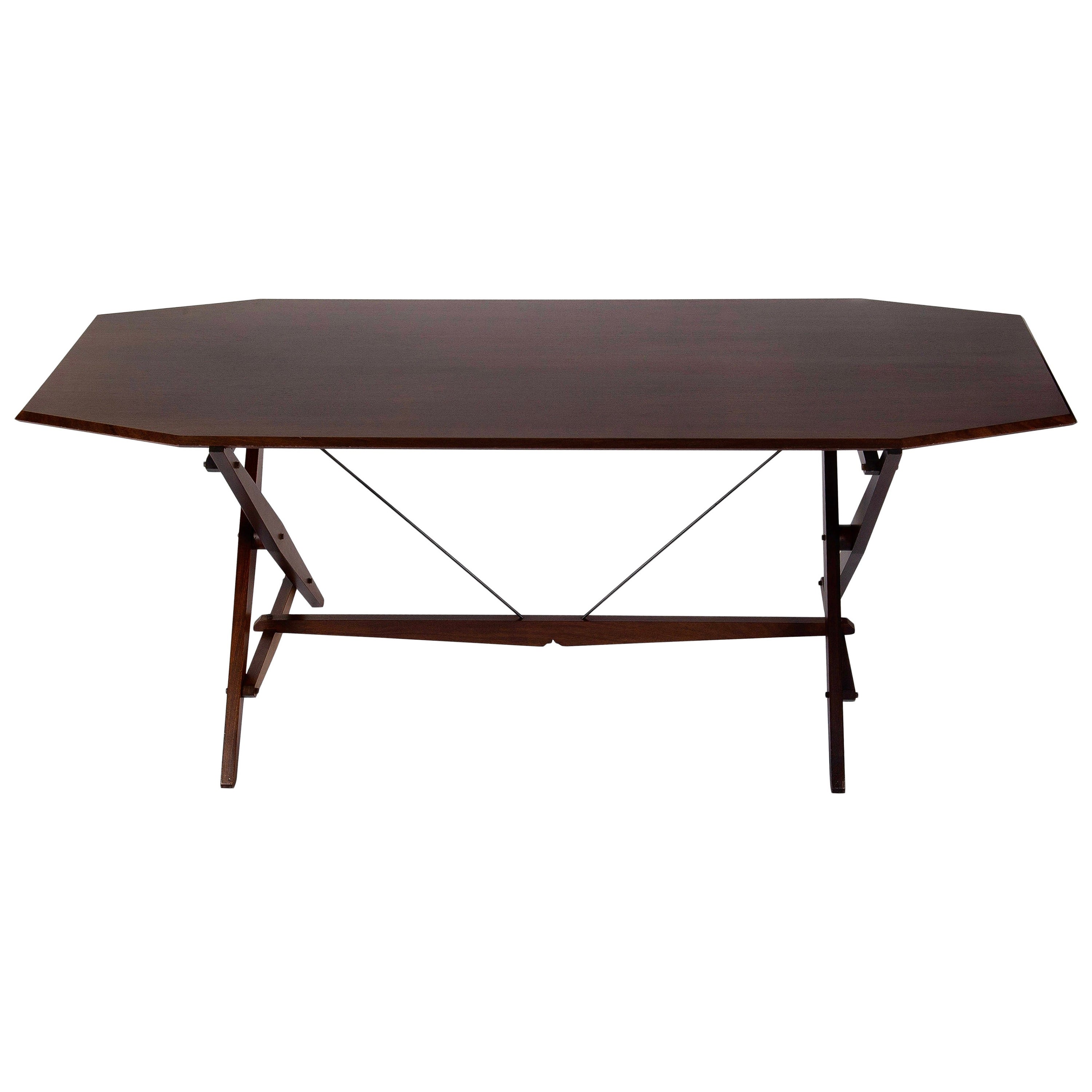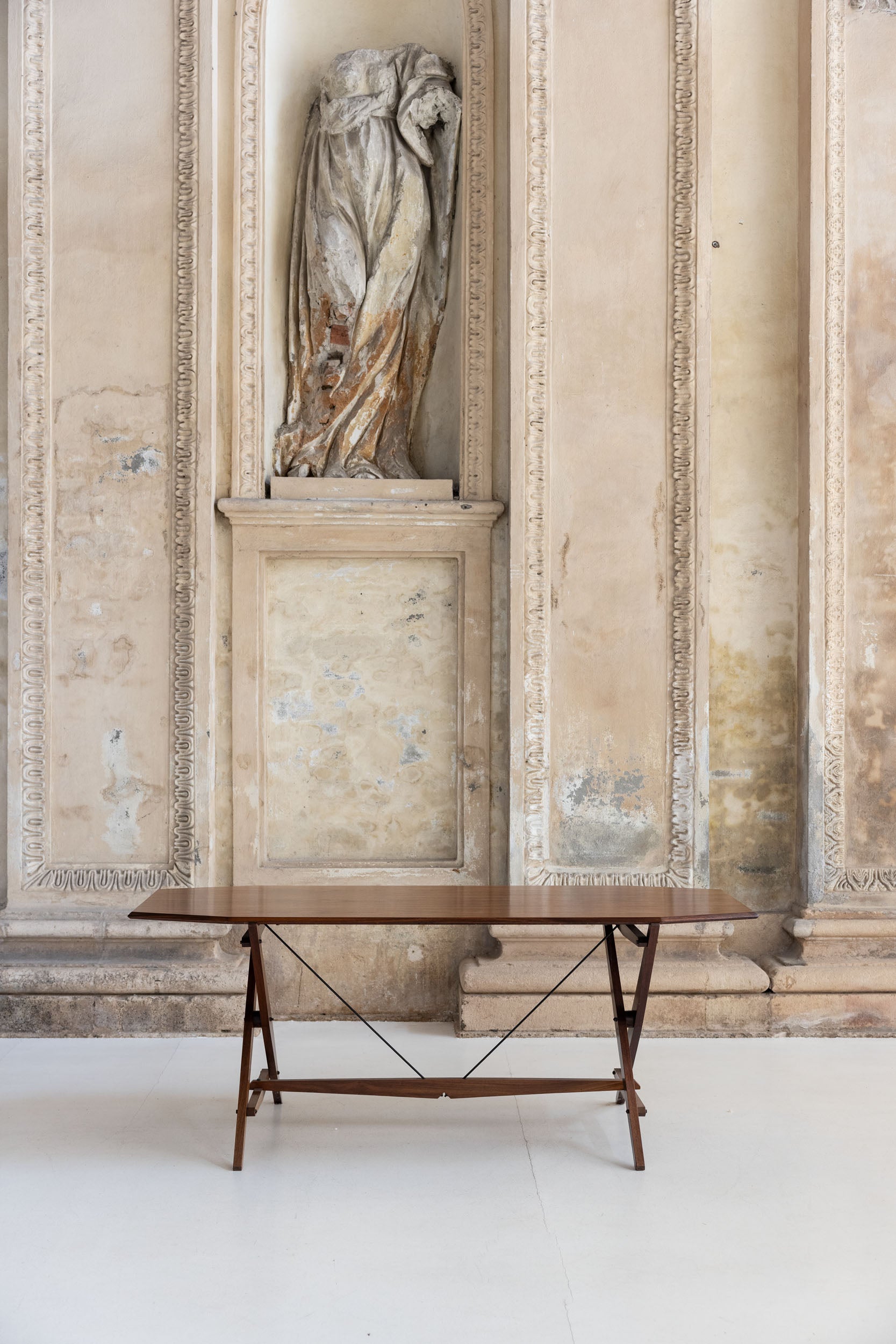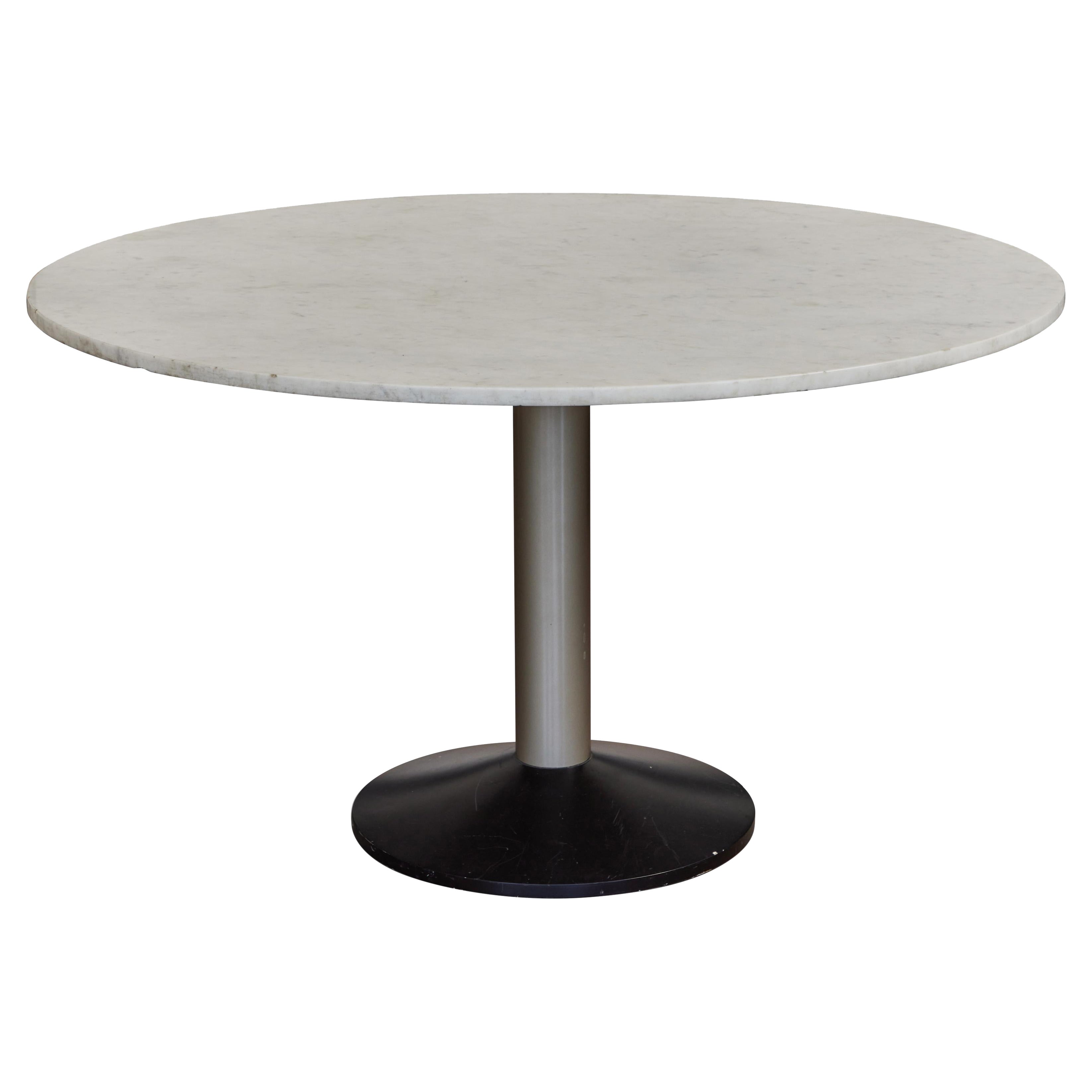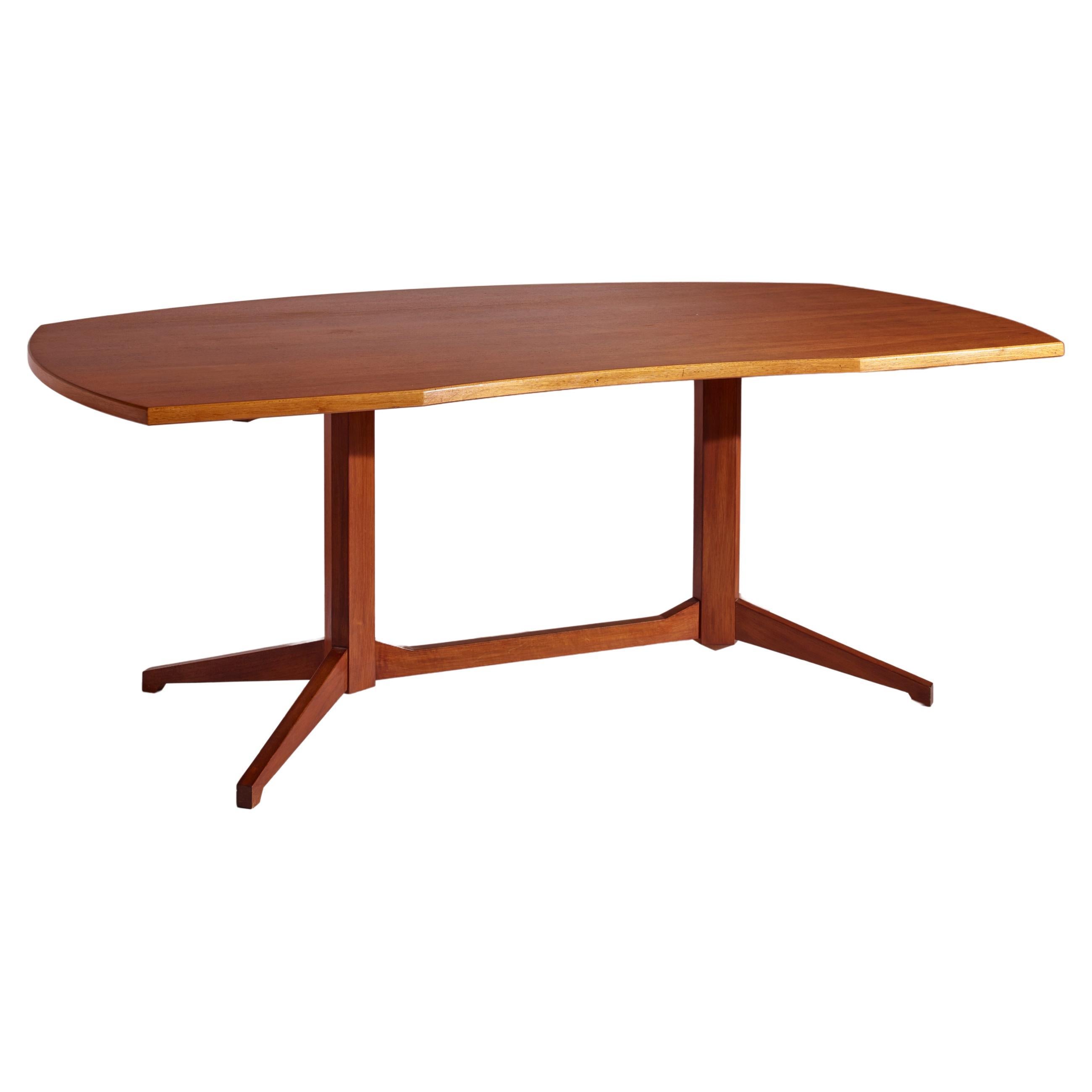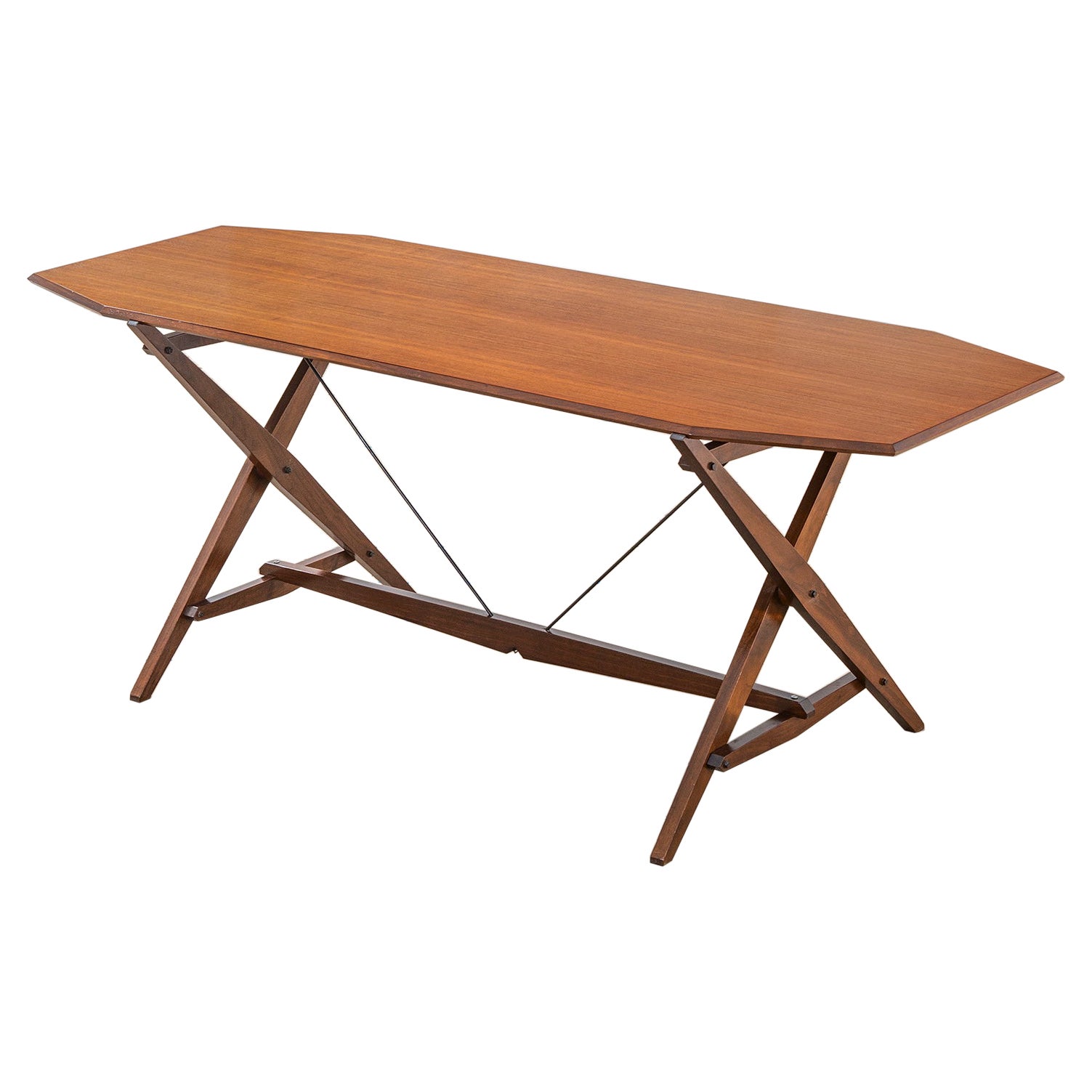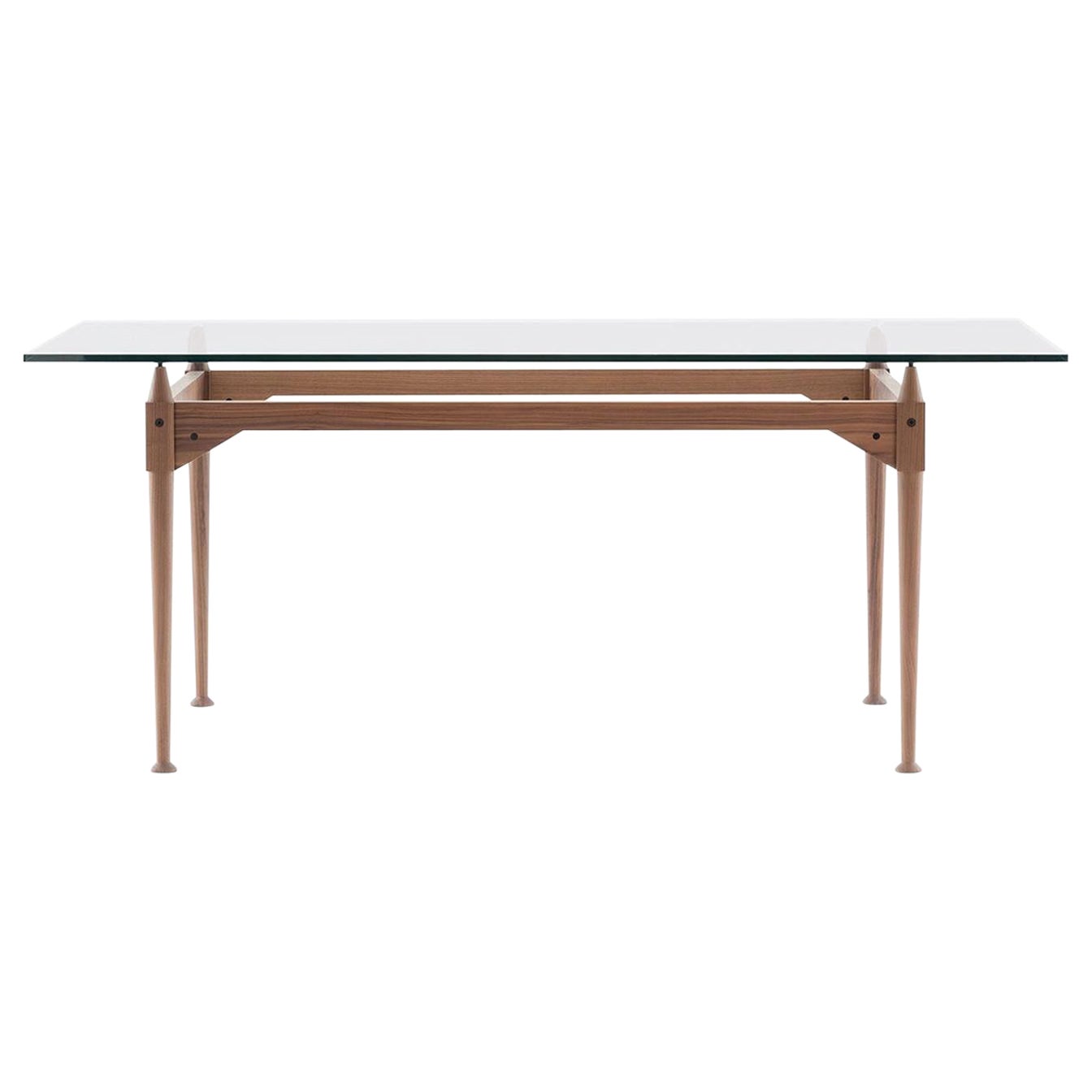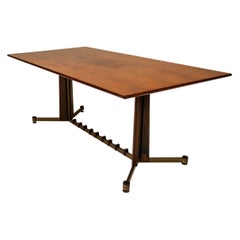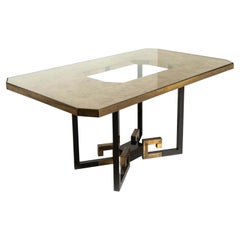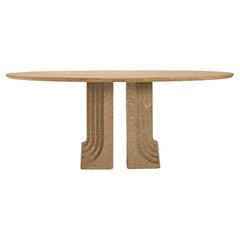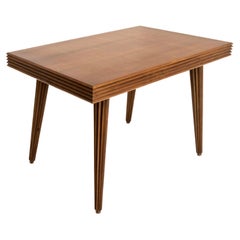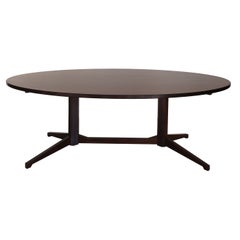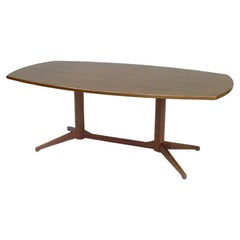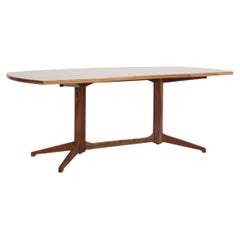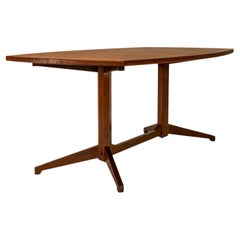
Dining Table, Model TL22, in Mahogany by Albini & Helg for Poggi, Italy 1958
View Similar Items
Video Loading
Want more images or videos?
Request additional images or videos from the seller
1 of 10
Dining Table, Model TL22, in Mahogany by Albini & Helg for Poggi, Italy 1958
About the Item
- Creator:Pozzi (Manufacturer),Franco Albini and Franca Helg (Designer)
- Dimensions:Height: 28.75 in (73 cm)Width: 70.87 in (180 cm)Depth: 40.95 in (104 cm)
- Style:Mid-Century Modern (Of the Period)
- Materials and Techniques:
- Place of Origin:
- Period:
- Date of Manufacture:1958
- Condition:Refinished.
- Seller Location:Hellouw, NL
- Reference Number:1stDibs: LU5583233785832
About the Seller
5.0
Gold Seller
Premium sellers maintaining a 4.3+ rating and 24-hour response times
Established in 2019
1stDibs seller since 2021
157 sales on 1stDibs
Typical response time: 1 hour
Authenticity Guarantee
In the unlikely event there’s an issue with an item’s authenticity, contact us within 1 year for a full refund. DetailsMoney-Back Guarantee
If your item is not as described, is damaged in transit, or does not arrive, contact us within 7 days for a full refund. Details24-Hour Cancellation
You have a 24-hour grace period in which to reconsider your purchase, with no questions asked.Vetted Professional Sellers
Our world-class sellers must adhere to strict standards for service and quality, maintaining the integrity of our listings.Price-Match Guarantee
If you find that a seller listed the same item for a lower price elsewhere, we’ll match it.Trusted Global Delivery
Our best-in-class carrier network provides specialized shipping options worldwide, including custom delivery.More From This Seller
View AllDining Table in Mahogany, Rosewood and Brushed Brass, Italy, 1960s
Located in Hellouw, NL
This Italian dining table from the 1960s stands out for its architectural design and choice of materials. Let's start with the frame that is characterized by a number of striking det...
Category
Vintage 1960s Italian Mid-Century Modern Dining Room Tables
Materials
Brass
Sandro Petti Dining Table for Angolometallarte, Italy, 1970s
By Angolometallarte, Sandro Petti
Located in Hellouw, NL
This Sandro Petti dining table for Angolometallarte from Italy the 1970s is one of our favorite items. We love the combination of the black chromed metal, brass feet, and glass top. ...
Category
Vintage 1970s Italian Mid-Century Modern Dining Room Tables
Materials
Brass, Chrome
$5,874 Sale Price
20% Off
Carlo Scarpa 'Samo' Dining Table for Simon Gavina, Italy, 1970s
By Carlo Scarpa, Simon Gavina Editions
Located in Hellouw, NL
This Italian dining table from the 1970s exudes timeless elegance and beauty. It was designed by perhaps one of the prominent Italian modernist designers of the last century. What im...
Category
Vintage 1970s Italian Mid-Century Modern Dining Room Tables
Materials
Granite
Gio Ponti Dining Table in Veneered Walnut, Italy 1940s
By Gio Ponti
Located in Hellouw, NL
This exceptional dining table, designed by the legendary Gio Ponti in the early 1940s, is a stunning example of Italian craftsmanship and design. Featuring a rectangular top veneered...
Category
Vintage 1940s Italian Mid-Century Modern Dining Room Tables
Materials
Wood, Walnut
Travertine Dining Table, Italy, 1970s
Located in Hellouw, NL
The 1970s Italian travertine dining table is a must for the interior of every midcentury design enthusiast. A lovely composition of this very distinct stone shows up close that it di...
Category
Vintage 1970s Italian Mid-Century Modern Dining Room Tables
Materials
Travertine
Dining Table Model “Corinto” by Ferdinando Meccani, Italy 1978
By Ferdinando Meccani
Located in Hellouw, NL
Dining table model “Corinto” by Ferdinando Meccani for Meccani Arredamento.An anything but modest dining room table is the “Corinto” by the Italian designer Ferdinando Meccani. The t...
Category
Vintage 1970s Italian Mid-Century Modern Dining Room Tables
Materials
Cherry, Glass
You May Also Like
Franco Albini and Franca Helg for Poggi Italian Walnut Dining Table TL22
By Poggi, Franco Albini and Franca Helg
Located in Reggio Emilia, IT
Italian Mid-Century Modern design dining table designed by Franco Albini and Franca Helg and produced by Poggi Pavia from 1958 with veneered walnut top with elliptical shaped longer ...
Category
Vintage 1950s Italian Mid-Century Modern Tables
Materials
Wood, Walnut
Table 'TL22' by Franco Albini / Franca Helg 1958
By Franco Albini and Franca Helg, Poggi
Located in Berlin, DE
This classic table, model 'TL22', was designed by the two Italian designers Franca Held and Franco Albini for Poggi in 1958. The shape is named after the so-called boat shape. The co...
Category
Vintage 1950s Italian Mid-Century Modern Dining Room Tables
Materials
Walnut
Desk Model TL22, by Franco Albini and Franca Helg. Poggi, 1958
By Franco Albini and Franca Helg, Amando Poggi
Located in Wolfurt, AT
Desk model TL22, designed by Franco Albini and Franca Helg and manufactured by Poggi in 1958.
Table completely restored. Wood: walnut.
Letteratura: Gramigna G., Repertorio del desig...
Category
Vintage 1950s Italian Mid-Century Modern Desks and Writing Tables
Materials
Walnut
Tavolo 'TL22' design di Franco Albini per Poggi anni 60
By Franco Albini
Located in Milano, IT
Tavolo modello 'TL22' disegnato da Franco Albini per una produzione Poggi anni '60. Restaurato nei nostri laboratori, il tavolo è realizzato esclusivamente in legno ed è composto da...
Category
Vintage 1960s Italian Mid-Century Modern Tables
Materials
Wood
Table TL22 - Franco Albini for Poggi with Artistic Intervention by Alberto Tonni
By Franco Albini
Located in Milano, IT
The one we propose is the iconic TL22 table designed by Franco Albini in 1958 and produced by Poggi but which, having come to us in the 21st century, is reinterpreted and modernized ...
Category
Mid-20th Century Italian Mid-Century Modern Tables
Materials
Brass
Franco Albini Mahogany mid-centry Italian Table Model TL-22 produced by Poggi
By Franco Albini
Located in Barcelona, ES
Franco Albini & Franca Helg.
Dining table model no. TL22.
Manufactured by Poggi,
Italy, 1958.
Mahogany.
Measurements:
180.3 cm x 104.1 cm x 73 H cm.
70.98 in x 40.98 in x 28.74 in.
Literature:
Giuliana Gramigna, Repertorio 1950/1980, Milan, 1985, p. 123.
Franco Albini, was born in 1905 and died in 1977. He spent his childhood and part of his youth in Robbiate in Brianza, where he was born. Albini, as an adolescent moved with his family to Milan. Here he enrolled in the Faculty of Architecture of the Polytechnic and graduated in 1929. He started his professional activity in the studio of Gio Ponti and Emilio Lancia, with whom he collaborated for three years. At the 1929 International Exhibition in Barcelona (where Gio Ponti curated the Italian pavilion and Mies van der Rohe realized that of Germany) and in Paris where, as Franca Helg recounted, he had the opportunity to visit the studio by Le Corbusier.
In those three years, the works he carried out are admittedly of the twentieth century imprint. It is the meeting with Edoardo Persico that marked a clear turning point towards rationalism and the approach to the group of editors of "Casabella". The partly ironic and partly very harsh comments of the Neapolitan critic to a series of drawings, made by Albini for the design of some office furniture, caused him a great disturbance. “I spent days of real anguish - Albini recalls - I had to answer all the questions. I also had a fever, a large and long fever. "
The meted provoked Albini to openen a professional studio in via Panizza with Renato Camus and Giancarlo Palanti. The group of architects began to deal with public housing by participating in the competition for the Baracca district in San Siro in 1932 and then building the IFACP neighborhoods: Fabio Filzi (1936/38), Gabriele D'Annunzio and Ettore Ponti (1939).
During this period, Albini also worked on his first villa (Pestarini), which Giuseppe Pagano, architect and critic of the time, presented as follows: “This coherence, which the superficial rhetoric of fashionable jugglers calls intransigence, and which is instead the basis of understood between the fantasy of art and the reality of the craft, in Franco Albini, it is so rooted that it transforms theory into a moral attitude ".
But it is above all in the context of the exhibitions that the Milanese master experienced his compromise between that "rigor and poetic fantasy" of which Pagano speaks, coining the elements that became a recurring theme in his . The opening in 1933 of the new Triennale headquarters in Milan, in the Palazzo dell'Arte, was an important opportunity to express the strong innovative character of rationalist thinking, a gym in which to freely experiment with new materials and new solutions, but above all a "method". "Cultivated as a communication laboratory, the art of setting up was for the rationalists of the first generation what the perspective had been for the architects of humanism: the field open to a hypothesis of space that needed profound reflections before landing the concreteness of the construction site ".
Together with Giancarlo Palanti, Albini on the occasion of the V Triennale di Milano set up the steel structure house (with R. Camus, G. Mazzoleni, G. Minoletti and with the coordination of G. Pagano), for which he also designed the 'furniture. At the following Triennale of 1936, Persico dided, together with a group of young designers gathered by Pagano in the previous edition of 1933, Franco Albini took care of the preparations of the home exhibition. The setting up of Stanza per un uomo, at that same Triennale, allows us to understand the acute and ironic approach of Albini, as a man and as a designer: "Celebrating the beauty of mechanics was the imperative to which, for example, the surprising displays by Franco Albini who managed, in the subtle way of a refined and rarefied style, to sublimate their practical content in the metaphysics of daring still lifes: flying objects which marked in the void refined frames and metal intricacies the nodes of a fantastic cartography where industry finally became art free from purpose ".
That same year Albini and Romano designed the exhibition of the Ancient Italian Goldsmithery: vertical uprights, simple linear rods, designed the space. A theme, of the "flagpole", seemed to be the center of the evolution of production and the creative process. The concept is reworked over time, with the technique of decomposition and recomposition typical of Albinian design: in the preparation of the Scipione Exhibition and contemporary drawings (1941) the tapered flagpoles, on which the paintings and display cases were hung, are supported by a grid of steel cables; in the Vanzetti stand (1942) they take the V-shape; in the Olivetti shop in Paris (1956) the polished mahogany uprights support the shelves for the display of typewriters and calculators.
The flagpole is found, however, also in other areas. In the apartments he designed, it is used as a pivot on which the paintings can be suspended and rotated to allow different points of view, but at the same time as an element capable of dividing the spaces. The Veliero bookcase...
Category
Mid-20th Century Italian Mid-Century Modern Dining Room Tables
Materials
Mahogany
